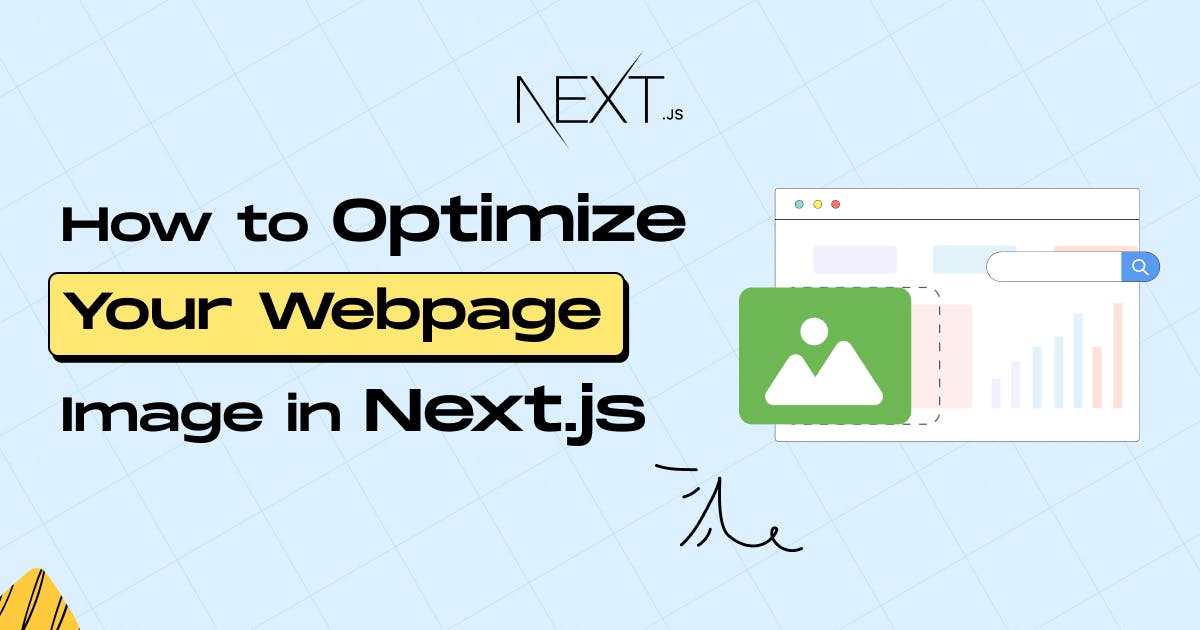December 17, 2023
How to Optimize Your Webpage Images in Next.js?

Mohammad Kausar

Automatic Image Optimization is now available in Next.js versions 10.0.0 and higher, thanks to the built-in Image Component. It's an HTML element that's been updated for the current web.
Image optimization is now more critical than ever for your website's speed and SEO. Optimized images guarantee the best speed and user experience for your website visitors, especially on mobile devices. Optimized images allow your site to load faster on slower devices while also conserving bandwidth.
Next.js' image component can optimize pictures on-demand as well as save build time. It efficiently resizes, optimizes, and serves pictures to browsers, regardless of device type or screen size.
The Major Concern:
One of the most crucial items to be loaded on your internet page is images. As a result, we'd want to have a mechanism to optimize photos for better Web Vital ratings, which Google intends to take into account.
When images aren't optimized, they might have a significant detrimental influence on a webpage. As a result, ensuring that photos are compressed to the appropriate size and saved in formats such as WebP, JPG, JPEG, and PNG might be a huge concern.
Key Factors List of Next.js Image Components Major Concern:
👉 Images take up 50% of the total bytes on web pages.
👉 Half of all images are over one megabyte in size, which means they aren't optimized to be displayed on the web.
👉 30% of images on web pages are outside of the initial viewport.
👉 Images often don't have a width and height property, causing them to jump around when the page is loaded. This hurts the Cumulative Layout Shift Core Web Vital.
👉 99.7% of images on websites don't use modern image formats like WebP.
👉 Nowadays, users browse the web using their phones, tablets, and laptops, yet images are still as a one size fits all. For example: sites load a 2000 by 2000 pixel image, but phones are only displaying it as 100 by 100 pixels.
Next.js Image Component
👉 Next.js Image Component is just a drop-in replacement for the HTML <img> element, evolved for the modern web.
👉 Using the next/image component, images are automatically lazy-loaded, meaning they're only rendered when the user is close to seeing the image. This prevents loading 30% of images outside of the initial viewport.
👉 While width and height on the HTML <img> element can cause issues with responsive layouts, this is not the case when using next/image. When using next/image the image is automatically made responsive based on the aspect ratio of the provided width and height.
👉 Next.js automatically preloaded images. Preloading images in the initial viewport has shown improvements to the Largest Contentful Paint (LCP) by up to 50%.
Some Optimized Features Next.js Image
👉 Improved Performance
👉 Visual Stability
👉 Faster Page Loads
👉 Asset Flexibility
Using Next.js Image
To add an image to your application, import the next/image component:

Local Images
To use a local image, import your .jpg, .png, or .webp files:


Optional Props
- layout
intrinsic
fixed
responsive
fill
raw
- quality
- priority
- placeholder
- loader
- Sizes
Info Source: Click Here
Advanced Props
- style
- objectFit
- objectPosition
- onLoadingComplete
- loading
- blurDataUrl
- lazyBoundary
- lazyRoot
- unoptimized
Info Source: Click Here
Last Talk
Looking to hire Top Next.js Developers? Look no further than StaticMania, your perfect choice for Next.js development. Feel free to contact us to discuss your project!
References
- https://nextjs.org/docs/api-reference/next/image#advanced-props
- https://nextjs.org/docs/basic-features/image-optimization#loaders
- https://nextjs.org/blog/next-10
- https://medium.com/swlh/built-in-automatic-image-optimization-in-next-js-b17fecaf7121
- https://betterprogramming.pub/how-to-use-next-js-10s-new-image-component-3b39dc4efe6f

